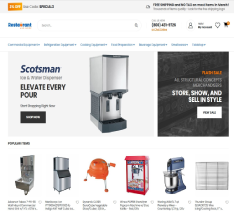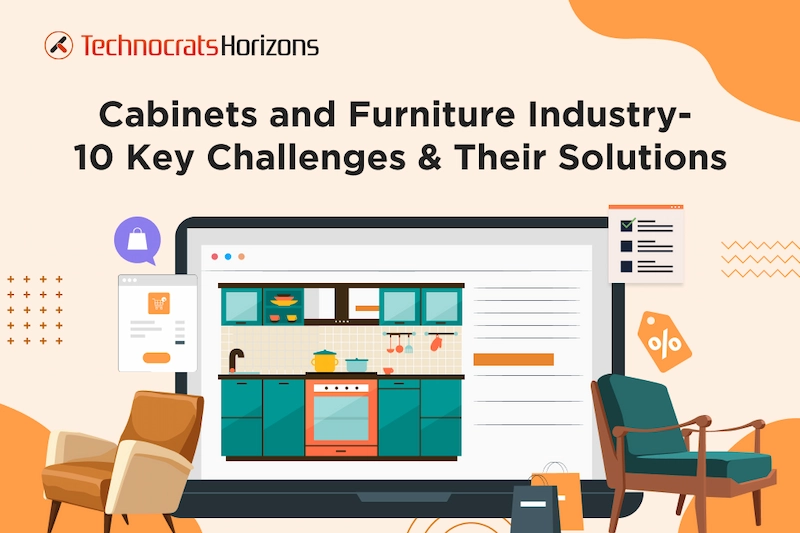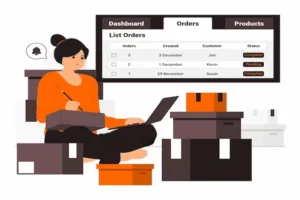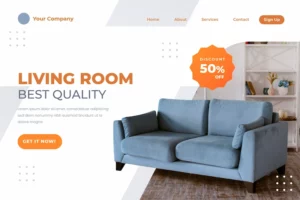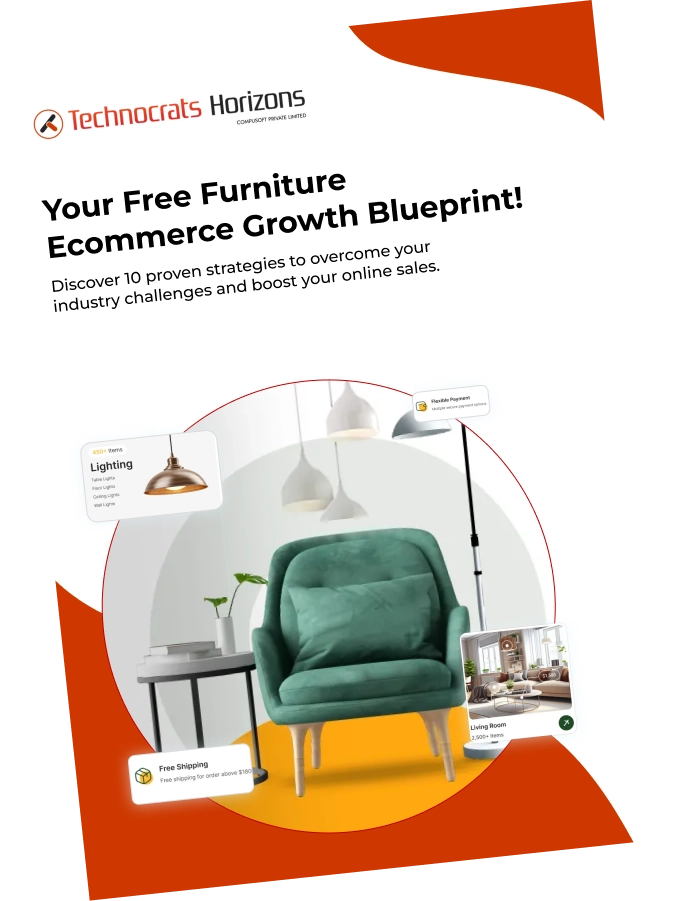In the present day, when everything is available at the click of a button, the cabinets and furniture industry is standing at a crossroads. For traditional store owners, financial obstacles, market fluctuations, and the ongoing struggle to connect with customers are everyday challenges. On the flip side, eCommerce businesses face fierce competition and the need to build trust in a world where in-person interactions are limited.
But have you considered that the global cabinet and furniture market is poised for significant growth?
It is expected to increase from $630.55 billion in 2022 to $1051.77 billion by 2032, with an impressive compound annual growth rate (CAGR) of 5.57% over the forecast period.
This market holds substantial potential for those willing to explore it. But are you one of the cabinets and furniture businesses still struggling to thrive?
Here’s the good news: we’ve compiled 10 major struggles faced by both retailers and business owners and how to successfully overcome them. So, whether you’re a store owner not being able to scale or an online business owner in a fierce race, this blog post is your guide.
10 Major Challenges & How You Can Overcome Them
Challenge 1: Untapped Sales Potential Due to Limited Reach
Local foot traffic can only take retailers so far. They struggle to expand beyond their immediate geographical area, missing out on a wider customer base. While your loyal local customers love your offerings, you need help to showcase your products to a broader audience.
Approximately 2.64 billion people worldwide are expected to shop online in 2023, as reported by Statista.
In this digital era, customers are accustomed to researching and purchasing products online, and the challenge is clear: traditional retailers risk missing out on these vast opportunities.
Solution
By embracing eCommerce, the cabinets and furniture industry can overcome these limitations. Let’s take the example of a small artisanal furniture shop in a picturesque town. By establishing an online store and leveraging digital marketing strategies, they can make their unique creations accessible to customers far beyond their local radius.
Social media platforms and search engine advertising can help attract potential customers from various regions, increasing visibility and revenue. Transitioning to eCommerce not only extends their reach but also enhances their competitive edge in an evolving market.
Challenge 2: Your Customers Cannot See The Products
Gaining the trust of customers in the digital world, where they can’t physically touch or inspect products, is a significant challenge for eCommerce businesses. Imagine you’re shopping for a new cabinet online, and you have reservations because you can’t see it in person.
You’re not alone. According to a survey by Baymard Institute, 17% of online shoppers abandoned their carts due to concerns about product quality.
To build trust, eCommerce businesses must establish their credibility and reassure potential customers.
Solution
Thanks to AR and VR, you can have a test run for products you’re thinking of buying. When customers can try before they buy, they’re nearly 11 times more likely to make a purchase. So, these technologies make online shopping more fun and less stressful.
With AR and VR, your customers can shop with confidence, knowing that what they see online is what they’ll get in real life. It’s like having a superpower that takes the uncertainty out of online shopping, making it an even better experience.
Challenge 3: Lack of Customization
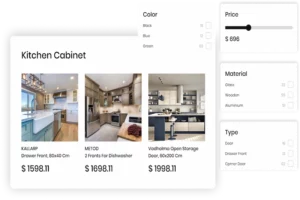
Lack of Customization
It can be tough for the cabinets and furniture eCommerce industry to make customers feel special. Imagine you’re an online furniture store, and your customers all see the same suggestions, regardless of their tastes. Without personal touches, customers might feel lost.
This is the biggest drawback for many existing eCommerce businesses which undermines the significance of customizations. Not taking a few extra steps to ensure that your customers get what they want can lead to major sales loss.
Facing Challenges in the Cabinets and Furniture Industry? We’ve Got Solutions!
Solution
AI can help by learning what each customer likes and suggesting products just for them. Think of it like Netflix suggesting shows you’re likely to enjoy based on your viewing history. Through the power of AI, you have the ability to connect with your customers on a deeper level, providing them with product recommendations tailored to their preferences.
This personal touch can significantly boost your sales, with studies revealing that personalized suggestions can lead to a remarkable 30% increase in purchases.
When customers feel that you truly understand their needs, it not only encourages them to shop with you but also creates a mutually beneficial scenario for all parties involved.
Challenge 4: Struggles With Inventory Management
Managing physical inventory is not a small task for cabinets and furniture retailers. It happens a lot where local furniture stores stocked with a lot of trendy couches are gathering dust due to suddenly going out of fashion. Conversely, they might find themselves unable to meet the demands of customers looking for a specific piece.
These inventory woes are more common than you might think.
In fact, an NRF study reveals that inventory shrinkage costs retailers nearly $50 billion annually.
Overstocked or understocked, these challenges can lead to financial losses and missed sales opportunities.
Solution
This complicated problem can be solved by embracing eCommerce’s inventory management solutions. Take Wayfair, for example. With the power of eCommerce, they offer an extensive range of products without worrying about overstocked or understocked showrooms. Wayfair’s digital platform enables them to adjust their inventory dynamically based on consumer demand and preferences.
For traditional retailers, transitioning to eCommerce allows for more agile inventory management, reducing the risk of overstocking or understocking. This ensures that the right products are available when customers want them, ultimately boosting sales and minimizing losses. eCommerce provides the tools and strategies needed for efficient inventory management, alleviating a significant burden on traditional retailers.
Challenge 5: Website Development and Maintenance
Creating and maintaining a user-friendly website can be a daunting task, especially for small eCommerce businesses. Building a website that is both visually appealing and user-friendly is essential, yet it can be expensive and technically challenging.
According to the U.S. Small Business Administration, the cost of building and maintaining a website can range from a few thousand dollars to tens of thousands, which can be a significant investment for small businesses.
Solution
One solution is to utilize user-friendly website-building platforms like Shopify or Wix. These platforms offer pre-designed templates and user-friendly tools that make website creation and maintenance more accessible.
By choosing the right platform and possibly hiring a web developer to customize the design, you can create an engaging and functional website without breaking the bank. By simplifying the website development process, you can focus on what truly matters: offering excellent products and customer experiences to succeed in the competitive eCommerce world.
Need Help With eCommerce Development? We're Here!!
Challenge 6: High Operating Costs
Traditional brick-and-mortar stores often grapple with significant expenses that can take a toll on their finances. This includes costs like rent, utility bills, and staffing, which collectively impact their profitability. Renting a shop at a prime location can cost you a lot. Add to this the costs of utilities and salaries, and it’s evident why operating a physical store can be financially draining. The challenge lies in balancing these costs while turning a profit.
Solution
The solution lies in transitioning to eCommerce, which offers a cost-effective alternative. Consider the case of Wayfair, an online furniture and home decor retailer that, with its lower operational costs, has seen remarkable growth.
In 2020, Wayfair reported over $14 billion in net revenue.
With eCommerce, the need for expensive physical spaces diminishes, freeing up significant capital for other critical business areas. This shift enables retailers to reinvest in quality products, website enhancements, and marketing efforts. Additionally, businesses can leverage the global reach of eCommerce to attract a broader customer base, thereby enhancing their revenue potential.
Challenge 7: Rapid Advancements in eCommerce and Technology
In the world of eCommerce, change is the only constant. As with most things in the world, technology, and online shopping trends keep evolving. Suppose you’re running an online furniture and cabinets business, and you’ve got your website all setup. But then, you blink, and suddenly there’s a new trend or a breakthrough in technology, and your site feels outdated. Staying on top of these constant tech shifts can be a real challenge. Yet, it’s vital for your business’s growth.
Solution
Embracing eCommerce solutions driven by AI can be your dynamic ally in this ever-changing landscape. AI can adapt and evolve with the times. It can help you stay up-to-date with the latest trends, anticipate changes, and make real-time adjustments. For instance, AI can identify customer preferences and buying patterns, ensuring that your product offerings remain relevant and appealing. By incorporating AI, you can keep your eCommerce business in sync with the rapid evolution of technology and the online shopping experience.
Challenge 8: Marketing Challenges
Traditional retailers often find themselves tackling plenty of marketing challenges that appear as vast as the digital landscape itself. Those who have been in the market for a long time must feel troubled by the sudden change in the marketing environment. You are now competing with eCommerce superpowers who dominate digital advertising and social media.
In today’s rapidly changing digital marketing landscape, staying ahead can seem challenging for the cabinets and furniture industry.
For context, a report from Statista predicts that global digital ad spending will reach $679.80 billion by 2023, highlighting the intense competition.
Solution
There are two ways you can tackle this- using digital marketing tools to promote your store or your eCommerce site. These tools help them identify customer preferences and behaviors, enabling more targeted and effective advertising.
eCommerce also opens doors to social media marketing and search engine optimization, ensuring the brand remains visible and competitive. With the right approach, the transition to eCommerce transforms marketing challenges into opportunities for creative and data-driven solutions, ultimately helping the cabinets and furniture industry to thrive in the digital age.
Struggling with Marketing Challenges in the Furniture Industry? Find Proven Solutions!
Challenge 9: The Evolving Customer Journey
The way customers shop has transformed over the years. Recall the days when shopping primarily involved visiting physical stores. Fast forward to the present, and the customer journey has become significantly more intricate.
Customers research products online, read reviews, and compare prices, all from the comfort of their couch. They need a guided shopping journey at each touchpoint. This evolving journey can be a struggle for businesses trying to keep up with changing consumer behaviors.
Solution
To navigate the evolving customer journey, focus on enhancing the user experience on your eCommerce website. To succeed in this dynamic landscape, it’s essential to ensure that your website is user-friendly, boasting clear navigation and a seamless checkout process. Incorporating customer reviews and ratings can foster trust, and providing comprehensive product information assists customers in making informed decisions.
Additionally, consider adopting multichannel strategies, such as selling on social media platforms or through online marketplaces, to meet customers where they are in their journey. By providing a smooth, informative, and accessible shopping experience, you can adapt to changing consumer behaviors and cater to their evolving needs.
Challenge 10: Competitive Online Landscape For eCommerce Businesses
Entering the world of eCommerce is like opening a shop in a busy mall with countless stores competing for shoppers’ attention. The intense online competition is a reality for new eCommerce ventures. Just building an eCommerce website is not enough for most businesses as they realize that gathering attention online is not as easy as it seems.
Solution
To stand out in the fierce online competition, the cabinets and furniture industry needs a clear and compelling value proposition. Take the example of Article, an eCommerce furniture retailer that differentiates itself through high-quality, affordable modern furniture. By honing in on a specific niche and offering something unique, they’ve thrived in the competitive eCommerce landscape.
Additionally, investing in digital marketing and search engine optimization can help your business get noticed. With the right strategies, your eCommerce business can not only compete but also excel in the crowded digital marketplace.
Conclusion
The cabinets and furniture industry is evolving, and so are the challenges it presents. Whether you’re a traditional retailer or an eCommerce entrepreneur, adapting to change and finding solutions is the key to success. By addressing these challenges, you can transform them into opportunities for growth and innovation.
eCommerce alone is not enough; you need eCommerce powered by robust backed, AI, AR/VR, customization, attractive UI/UX, and much more. For such comprehensive eCommerce solutions, you need an expert partner. Technocrats Horizons is a leading eCommerce development company with years of experience in building scalable eCommerce solutions for the cabinets and furniture industry. Reach out to our experts for a quick consultation.
Looking For End-to-End Cabinets and Furniture eCommerce Solutions? Choose Us!!
Struggling with generic eCommerce platforms?
Get a custom solution built just for your business model.
About The Author
Related Blogs
Top 11 eCommerce Business Problems Facing SMBs + How to Crush Them
What is eCommerce Experience and Why Does It Matter
How Social Commerce Empower Traditional E-commerce Businesses to Grow 3X Faster









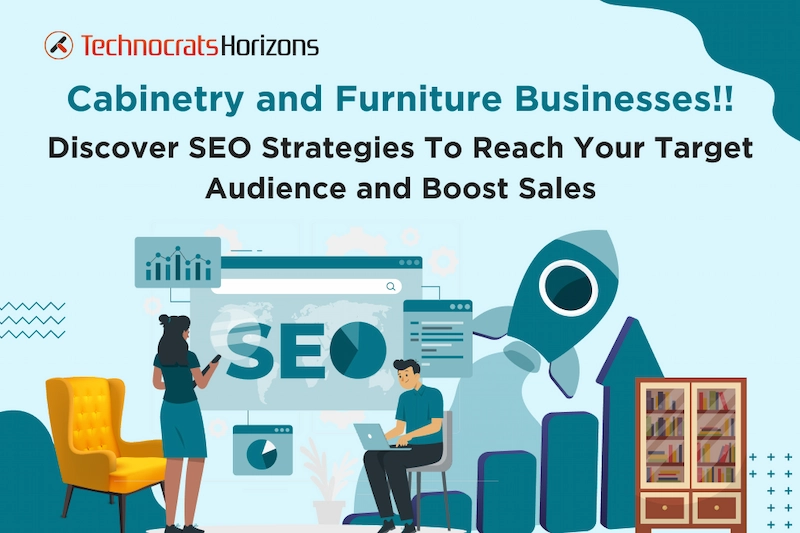


 Request a
Request a













